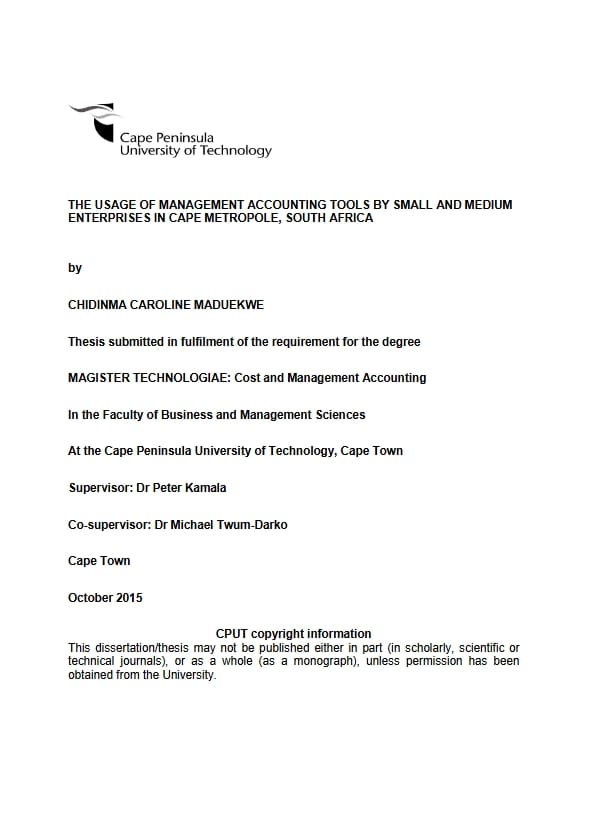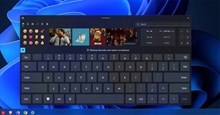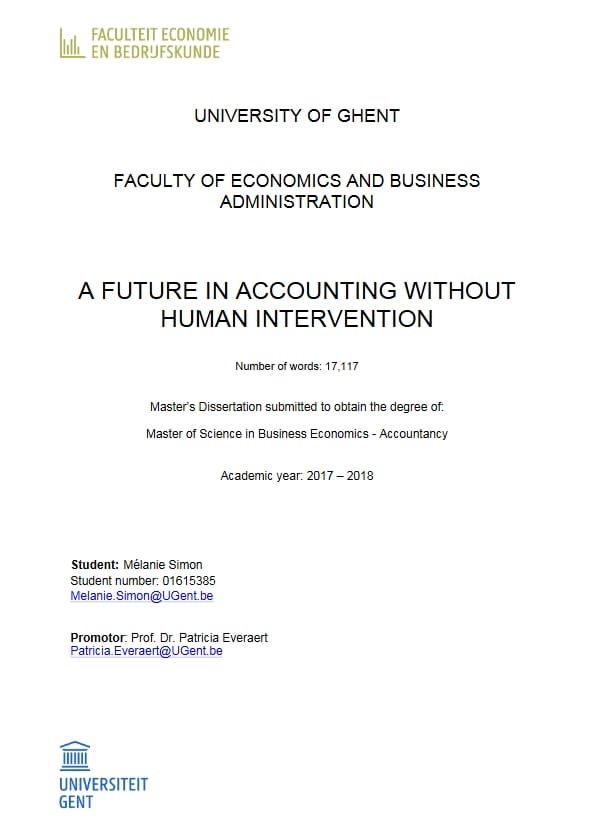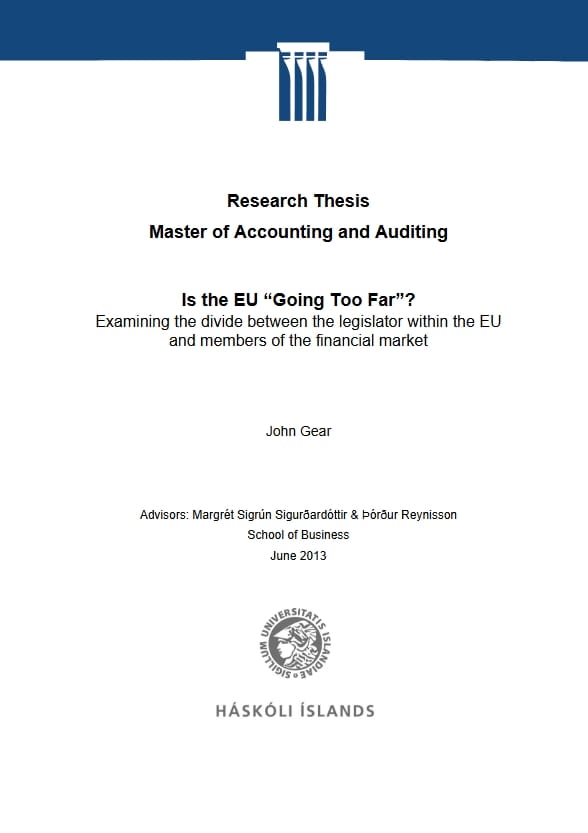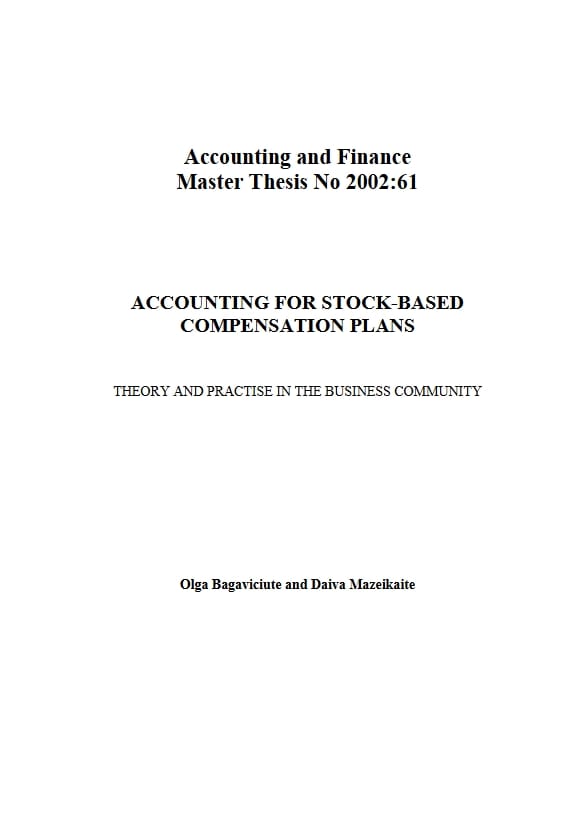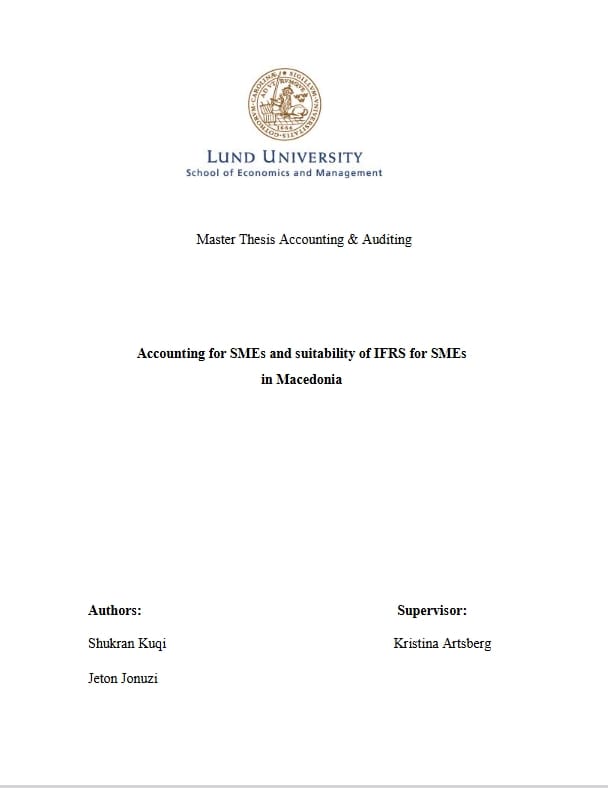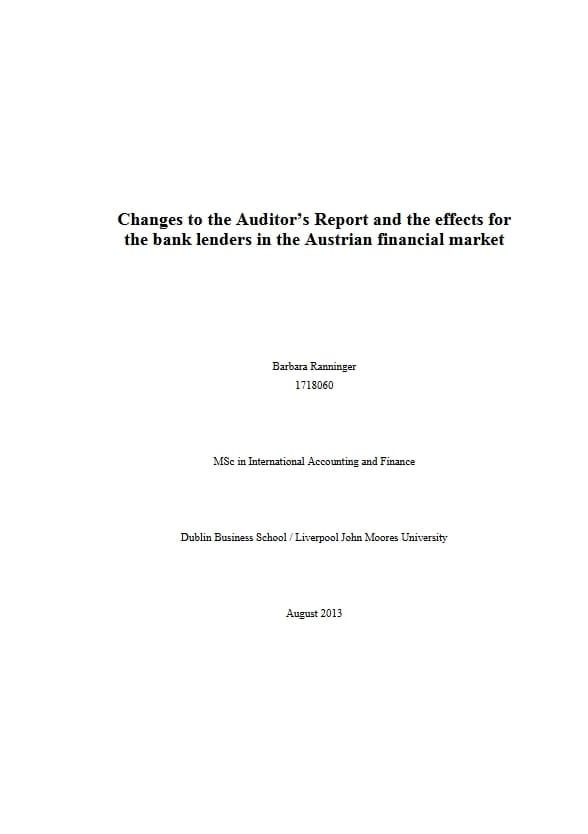TABLE OF CONTENTS
DECLARATION ………………………………………………………………………………………………………………….. i
ABSTRACT …………………………………………………………………………………………………………………………ii
ACKNOWLEDGEMENTS …………………………………………………………………………………………………… iii
DEDICATION …………………………………………………………………………………………………………………….. iv
CHAPTER ONE:BACKGROUND AND PROBLEM STATEMENT ……………………………………….. 1
1.1 BACKGROUND ……………………………………………………………………………………………………………. 1
1.2 Problem statement ……………………………………………………………………………………………………….. 4
1.3 Purpose Statement ………………………………………………………………………………………………………. 5
1.4 Research question; sub-questions and objectives ………………………………………………………….. 6
1.4.1 Research question …………………………………………………………………………………………………. 6
1.4.2 Sub-questions, research methods and objectives…………………………………………………….. 6
1.5 IMPORTANCE OF THE STUDY……………………………………………………………………………………. 7
1.6 RESEARCH DESIGN …………………………………………………………………………………………………… 7
1.6.1 The empirical study ………………………………………………………………………………………………… 7
1.6.2 Sampling method …………………………………………………………………………………………………… 8
1.6.3 Data collection, analysis and interpretation ……………………………………………………………… 8
1.7 ETHICAL CONSIDERATION ………………………………………………………………………………………… 8
1.8 DELINEATION OF THE RESEARCH ……………………………………………………………………………. 9
1.9 THE SIGNIFICANCE OF THE STUDY ………………………………………………………………………….. 9
1.10 LIMITATIONS AND CONSTRAINTS……………………………………………………………………………. 9
1.11 CONTRIBUTION OF THE RESEARCH……………………………………………………………………… 10
CHAPTER TWO:LITERATURE REVIEW …………………………………………………………………………. 11
2.1 INTRODUCTION ………………………………………………………………………………………………………… 11
2.2 DEFINITION AND DESCRIPTION OF MANAGEMENT ACCOUNTING AND MATS ……… 11
2.2.1 Definition of Management Accounting……………………………………………………………………. 11
2.2.2 Budgeting tools …………………………………………………………………………………………………….. 12
2.2.3 Performance Measurement Tools (PMTs) …………………………………………………………….. 13
2.2.4 Pricing tools …………………………………………………………………………………………………………. 15
2.3 DEFINITION OF SMES AND THEIR IMPORTANCE TO THE SOUTH AFRICAN
ECONOMY ………………………………………………………………………………………………………………………. 16
2.3.1 Definition of SMEs ………………………………………………………………………………………………… 17
2.3.2 Importance of SMEs……………………………………………………………………………………………… 18
2.4 PRIOR STUDIES ON THE TYPES OF MANAGEMENT ACCOUNTING TOOLS
EMPLOYED BY SMES …………………………………………………………………………………………………….. 19
2.4.1 Budgets ……………………………………………………………………………………………………………….. 19
2.4.2 Performance Measurement Tools (PMTs) ……………………………………………………………… 23
2.4.3 Pricing Tools ………………………………………………………………………………………………………… 27
2.5 PRIOR STUDIES ON THE PURPOSE FOR WHICH MATS ARE USED ……………………….. 33
2.6 PRIOR STUDIES ON PERCEPTIONS OF SMES REGARDING THE EFFECTIVENESS
OFMATS EMPLOYED ……………………………………………………………………………………………………… 37
2.7 PRIOR STUDIES ON THE FACTORS THAT INHIBIT SMES FROM USING MATS ………. 39
2.8 GAPS IDENTIFIED IN THE REVIEW OF THE PRIOR LITERATURE …………………………… 42
2.9 SUMMARY AND CONCLUSION …………………………………………………………………………………. 43
CHAPTER THREE:RESEARCH DESIGN AND METHODOLOGY …………………………………….. 46
3.1 INTRODUCTION ………………………………………………………………………………………………………… 46
3.2 POSITIVIST RESEARCH PARADIGM ………………………………………………………………………… 47
3.3 JUSTIFICATION FOR THE QUESTIONNAIRE SURVEY METHODOLOGY …………………. 47
3.4 RESEARCH POPULATION AND SAMPLING TECHNIQUE …………………………………………. 48
3.4.1 Research population …………………………………………………………………………………………….. 48
3.4.2 Sampling technique………………………………………………………………………………………………. 48
3.5 DESIGN OF THE QUESTIONNAIRE …………………………………………………………………………… 48
3.5.1 General description of the questionnaire design …………………………………………………….. 48
3.5.2 Description of the specific sections of the questionnaire …………………………………………. 49
3.5.2.1 Section One: Management accounting tools ……………………………………………………. 49
3.5.2.2 Section Two: Management accounting reports ………………………………………………… 52
3.5.2.3 Section Three: Perception of the effectiveness of management accounting ………. 52
tools used …………………………………………………………………………………………………………………. 52
3.5.2.4 Section Four: Factors that inhibit preparation of management accounting
reports ………………………………………………………………………………………………………………………. 52
3.5.2.5 Section Five: Respondent and business profile ……………………………………………….. 53
3.6 PILOT STUDY ……………………………………………………………………………………………………………. 53
3.7 DATA COLLECTION PROCESS …………………………………………………………………………………. 54
3.8 DESCRIPTION OF DATA ANALYSIS METHODS ADOPTED ………………………………………. 54
3.8.1 Descriptive statistics……………………………………………………………………………………………… 55
3.9 MEASURES TO ENSURE RELIABILITY AND VALIDITY …………………………………………….. 55
3.9.1 Reliability of the research instrument …………………………………………………………………….. 55
3.9.2 Validity of the research instrument …………………………………………………………………………. 57
3.9.2.1 Internal validity …………………………………………………………………………………………………. 57
3.9.2.2 Construct validity ………………………………………………………………………………………………. 57
3.9.2.3 Content validity …………………………………………………………………………………………………. 57
3.9.2.4 External validity…………………………………………………………………………………………………. 58
3.10 LIMITATIONS OF THE QUESTIONNAIRE SURVEY………………………………………………….. 58
3.11 Ethical considerations ……………………………………………………………………………………………….. 60
3.11.1 Informed Consent……………………………………………………………………………………………….. 60
3.11.2 Confidentiality and anonymity ……………………………………………………………………………… 60
3.12 SUMMARY……………………………………………………………………………………………………………….. 60
CHAPTER FOUR:ANALYSIS AND DISCUSSION OF RESULTS ……………………………………… 62
4.1 INTRODUCTION ………………………………………………………………………………………………………… 62
4.2 RESTATEMENT OF RESEARCH OBJECTIVES …………………………………………………………. 62
4.3 RESPONSE RATE……………………………………………………………………………………………………… 63
4.4 RESPONDENTS’ PERSONAL AND THEIR BUSINESSES’ PROFILE ………………………….. 63
4.4.1 Respondents’ position in the business …………………………………………………………………… 64
4.4.2 Respondents’ years of experience ………………………………………………………………………… 65
4.4.3 Respondents’highest level of education …………………………………………………………………. 65
4.4.4 Whether respondents’ highest level of education was accounting related ……………….. 66
4.4.5 Respondents’ business industry ……………………………………………………………………………. 67
4.4.6 Respondents’ business number of employees ……………………………………………………….. 68
4.5 TYPES OF MATs USED BY SMES …………………………………………………………………………….. 69
4.5.1 Usage of budgets by SMEs …………………………………………………………………………………… 69
4.5.2 Frequency of usage of various types of budgets by SMEs ……………………………………… 70
4.5.3 Frequency of usage of various methods of budgeting by SMEs………………………………. 72
4.5.4 Usage of PMTs by SMEs ……………………………………………………………………………………… 73
4.5.5 Frequency of usage of different types of performance measurement tools ………………. 74
by SMEs ………………………………………………………………………………………………………………………. 74
4.5.6 Usage of pricing tools by SMEs …………………………………………………………………………….. 77
4.5.7 Frequency of usage of various types of pricing tools by SMEs………………………………… 77
4.6 PURPOSE FOR WHICH MATS ARE USED BY SMES ………………………………………………… 80
4.6.1 Preparation of budgetary, performance measurement and pricing reports ………………. 80
4.6.2 Frequency of usage of management accounting reports for various purposes …. 81
4.7 PERCEVED EFFECTIVENESS OF THE MATs USED BY SMEs …………………………………. 84
4.8 FACTORS THAT INHIBIT THE USAGE OF MATs……………………………………………………….. 85
4.8.1 Factors that inhibit the respondents from using budgetary tools ……………………………… 87
4.8.2 Factors that inhibit the respondents from using PMTs…………………………………………….. 87
4.8.3 Factors that inhibit the respondents from using of pricing tools ……………………………….. 88
4.9 SUMMARY OF THE CHAPTER ………………………………………………………………………………….. 88
CHAPTER FIVE:SUMMARY AND CONCLUSIONS ………………………………………………………….. 91
5.1 INTRODUCTION ………………………………………………………………………………………………………… 91
5.2 CHAPTER 1 – RESEARCH PROBLEM AND OBJECTIVES …………………………………………. 91
5.3 CHAPTER2 ̶ SUMMARY AND CONCLUSION OF REVIEW OF PRIOR STUDIES ON THE
USE OF MATS…………………………………………………………………………………………………………………. 92
5.4 CHAPTER 3- SUMMARY AND CONCLUSION OFRESEARCH DESIGN AND
METHODOLOGY …………………………………………………………………………………………………………….. 93
5.5 CHAPTER 4 ̶ SUMMARY OF ANALYSIS AND DISCUSSION OF RESULTS ………………… 93
5.5.1 Population, response rate, respondents’ and businesses’ profiles …………………………… 94
5.5.2 Types of MATs used by SMEs ………………………………………………………………………………. 94
5.5.2.1 Budgets and budgeting methods used by SMEs ……………………………………………… 94
5.5.2.2 Performance measurement tools …………………………………………………………………….. 95
5.5.2.3 Pricing tools …………………………………………………………………………………………………… 95
5.5.3 Purpose for which MATs are used by SMEs ………………………………………………………….. 96
5.5.4 Perceived effectiveness of the MATs currently used by SMEs ………………………………… 96
5.5.5 Factors that inhibit SMEs from using MATs ……………………………………………………………. 96
5.6 CONTRIBUTION AND SIGNIFICANCE OF THE STUDY ……………………………………………… 96
5.6.1 Contribution of the study ……………………………………………………………………………………….. 96
5.6.2 Significance of the study ……………………………………………………………………………………….. 97
5.7 LIMITATIONS OF THE STUDY …………………………………………………………………………………… 98
5.8 SUGGESTIONS FOR FURTHER STUDIES ………………………………………………………………… 99
BIBLIOGRAPHY …………………………………………………………………………………………………………….. 101

